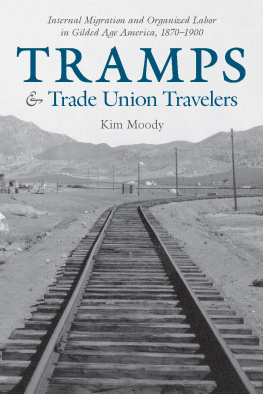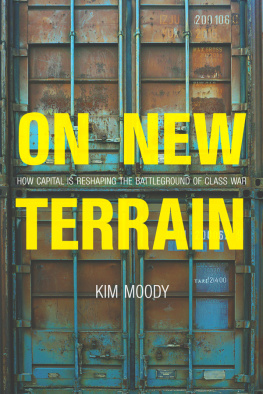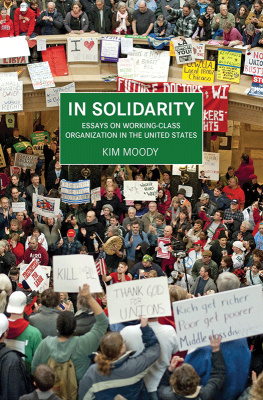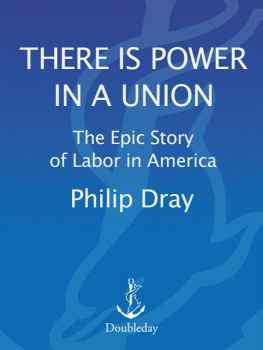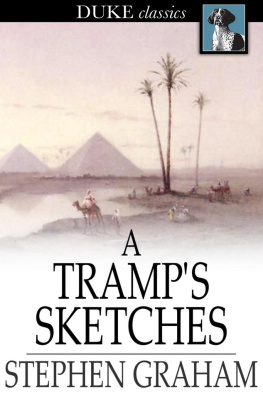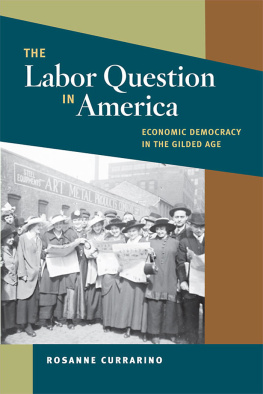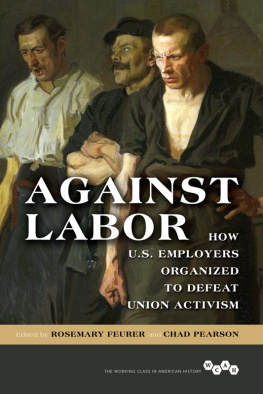TRAMPS
AND
TRADE-UNION TRAVELERS
TRAMPS
AND
TRADE-UNION TRAVELERS
Internal Migration and Organized Labor
in Gilded-Age America, 18701900
KIM MOODY
2019 Kim Moody
Published in 2019 by
Haymarket Books
P.O. Box 180165
Chicago, IL 60618
773-583-7884
www.haymarketbooks.org
ISBN: 978-1-60846-757-0
Distributed to the trade in the US through Consortium Book Sales and Distribution (www.cbsd.com) and internationally through Ingram Publisher Services International (www.ingramcontent.com).
This book was published with the generous support of Lannan Foundation and Wallace Action Fund.
Special discounts are available for bulk purchases by organizations and institutions. Please call 773-583-7884 or email for more information.
Cover photograph courtesy of the San Diego Railroad Museum Library. Cover design by Eric Kerl.
Library of Congress Cataloging-in-Publication data is available.
PREFACE
This book will argue that high levels of internal migration in Gilded-Age America undermined the stability and growth of trade unions and labor-based parties. Most of the traditional American exceptionalist arguments that assert a lack of class consciousness among American workers will be challenged. Significant weight will be given to the racial, ethnic, and gender divisions within the American working class as a source of relative organizational weakness. As archival sources reveal, however, despite their divisions, workers of all ethnic and racial groups drawn into wage-labor in the Gilded Age often displayed high levels of class consciousness and political radicalism through their actions, organizations, and hundreds of weekly labor papers. They also showed an awareness of the problems of frequent migration, or tramping, in building stable organizations. Driven by the tumultuous conditions of uneven industrialization, millions of people migrated from state to state, countryside to city, and city to city at rates far higher than in Europe. A detailed analysis of the statistics on migration, work-related traveling, and union membership trends shows that this created a high level of membership turnover in the major organizations of the daythe American Federation of Labor and the Knights of Labor. Confronted in the 1880s with the highest level of migration in the period, the Knights of Labor saw rapid growth turn into continuous decline. The more stable craft unions also saw significant membership loss to migration through an ineffective traveling-card system. The organizational weakness that resulted undermined efforts by American workers to build independent labor-based parties in the 1880s and 1890s. Pure and simple unionism would triumph by the end of the century despite the existence of a significant socialist minority in organized labor.
ACKNOWLEDGMENTS
First I want to thank my thesis supervisors in the Department of American and Canadian Studies at the University of Nottingham, John Ashworth, Peter Ling, and Christopher Phelps, whose criticisms, suggestions, and encouragement have been invaluable. Many others in the department have also helped me over various intellectual, technical, and administrative hurdles. Through their many comments, my fellow postgraduate students have also been a source of commentary and encouragement from a variety of perspectives.
I am grateful for the financial assistance from the Arts and Humanities Research Council for both my time in the doctoral program and for a research training support grant, which made possible the research and completion of my doctoral studies. I was fortunate to receive a great deal of help from a number of archivists and librarians.
Special thanks to the following: David Hays at the University of ColoradoBoulder Archives; Julie Herrada of the Labadie Collection at the University of MichiganAnn Arbor; the staff of the Tamiment Library at New York University; and the librarians at the New York Public Library Newspaper and Microfilm Department in the Schwarzman Building and the Science, Industry, and Business Library. Thanks also to the staff of Haymarket Books who helped me through the publication process.
For the love, encouragement, and patience of my partner, Sheila Cohen, my enduring thanks.
INTRODUCTION
Migration and movement, mobility and motion characterized identity in Victorian America. A country in transition was also in transit.
Thomas J. Schlereth
In August 1879, Robert Louis Stevenson, the Scottish writer then at the outset of a career that would later bring him fame with Treasure Island and Dr. Jekyll and Mr. Hyde, crossed the United States by train. In an essay titled Across the Plains, he described his journey in some detail. When he boarded a train in Ogden, Utah, he found himself among the mostly working-class emigrants seeking a better life in the far West, divided into three passenger cars: the Chinese in one car, women and children (presumably white) in another, and white males in the car he occupied. This division was in some ways a metaphor for the society taking shape. With the exception of one German family and a knot of Cornish minersthe rest were all American born and they came from every quarter of that Continent. He saw them as fugitives who spoke of a hope that moves ever westward. Yet, as we continued to steam westward toward the land of gold, we were continually passing other emigrant trains upon the journey east whose disillusioned passengers advised the westbound migrants to Come back!
The great teller of tales had witnessed a small piece of a gigantic drama of humanity fleeing one circumstance in hopes of a better one, often to find the metaphoric gold they sought in the West to be but a thin gilding, a gilding which hid the grimmer reality of wage labor much like the age itself that Mark Twain and Charles Dudley Warner called gilded. This book will argue that this geographic mobility, or internal migrationthe movement of people back and forth across the land, deemed so worthy of remark by Stevenson in his American travelsis a crucial, if largely neglected, factor in determining the relative weakness of organized labor in Gilded-Age America. The working class of the late nineteenth-century United States was, so to speak, formed on the run. While migration was a feature of early class formation in other countries as well, the size, scale, and rapidity of this constant migration in the late nineteenth-century United States far outstripped that of any European country.
It was, to be sure, the wealth and power of industry and city that drew these emigrants in many directions across the vast continent that contained the United States. But for the majority of those who were now becoming wageworkers, it was a time of trial and turmoil. The difficulties were easier on average for the native-born than the immigrant, the old immigrants than the new, the skilled than the un-skilled, the white than the black or Chinese, and the man than the woman, but were still hard traveling anyway for most people who lived from payday to payday. The condition of wage labor was new for many, an experience radically different from the self-employment of the farm, peasant plot, or artisans shop, where master and journeyman had once worked side by side. By 1879, the boss was typically no longer someone the employee knew personally, but a man, increasingly part of an impersonal corporation, possessed of enormous financial and material wealth and now known as a capitalist.



